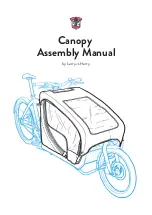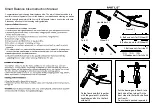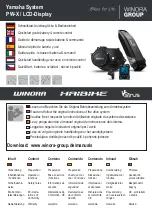
10. TRAINING WHEELS
To attach the training wheels to the frame, begin on one
side by removing only the outer axle nut. Position the square
alignment tab so that the notch on the tab fits into the
corresponding slot on the frame. (See Figure 2.) Place the
training wheel leg onto the axle and secure with the axle
nut that was previously removed. Tighten with an adjustable
wrench or 15mm open ended wrench.
WARNING:
The inner axle nut which holds the rear
wheel on should not be removed or loosened while installing
the training wheels. See Figure 1.)
Make sure that both training wheels are the same distance from the
ground and pointing straight down. To begin with, the training wheels
should be 1/4” off the ground on both sides. As your child becomes more
confident in riding, these can be raised slightly to help them learn to
balance. Adjustments can be made to the height of the training wheels by
simply loosening the outer axle nut and sliding the training wheel arm up
or down. Be certain to re-tighten the axle nuts securely after making any
adjustments. (See Figure 3.)
WARNING:
When riding with training wheels:
–
Ride only on level surfaces.
–
Do not ride on steep hills, uneven sidewalks, or near stairs. The bicycle can tip
over if a training wheel goes off the edge of the riding surface.
–
Ride straight up and down sloped surfaces, because the bicycle can tip over
when riding across sloped surfaces.
–
Slow down before corners to avoid tipping the bicycle over.
1
2
3
24
C















































